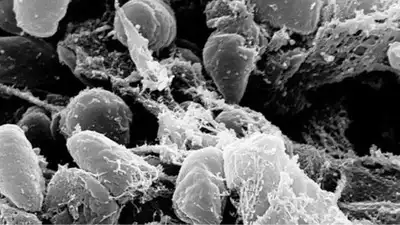World’s first pandemic mystery solved: Scientists uncover Yersinia pestis through ancient DNA after 1,500 years |

For over a thousand years, the origins of the Justinian Plague, one of the earliest recorded pandemics, remained unclear. Striking the Eastern Mediterranean around 541 AD, the outbreak killed tens of millions, devastating cities, disrupting trade, and reshaping the Byzantine Empire. While historical accounts described its catastrophic effects, scientists lacked direct evidence of the pathogen responsible. Recent research has now sequenced the genome of Yersinia pestis, the bacterium that caused the pandemic, providing definitive proof of its role. This discovery not only solves a centuries-old mystery but also enhances our understanding of how ancient pandemics spread, the impact on urban centres, and the recurring nature of plague throughout human history.
Yersinia pestis: The bacterium behind the world’s first pandemic
The Justinian Plague struck between 541 AD and 750 AD, causing mass mortality across the Eastern Roman Empire. Historical texts describe cities overwhelmed with death, trade disruption, and social collapse. While scholars suspected plague, direct biological evidence was missing. Previous findings of Yersinia pestis in western Europe offered clues, but the epicentre of the outbreak remained unconfirmed—until now. This discovery connects historical accounts to scientific evidence, confirming the devastating impact of the bacterium on Byzantine society.Scientists identified Yersinia pestis DNA from human remains in a mass grave in Jerash, Jordan, approximately 200 miles from Pelusium (modern-day Egypt), where the plague first appeared as published in the study PubMed. Co-author Rays HY Jiang from the University of South Florida explained that this finding offers the first direct evidence of the bacterium at the pandemic’s centre. Jerash, a key trade hub with impressive civic infrastructure, became a mass cemetery, illustrating how urban centres were quickly overwhelmed during the outbreak.
Ancient DNA techniques reveal hidden genomes
Using targeted ancient DNA (aDNA) techniques, researchers sequenced genetic material from eight human teeth excavated beneath the Roman hippodrome in Jerash. The analysis showed that victims carried nearly identical strains of Yersinia pestis, confirming that the bacterium spread widely throughout the Byzantine Empire between 550 AD and 660 AD. These results provide a genetic explanation for historical accounts describing rapid mortality and societal disruption during the pandemic.
Jerash mass grave shows the social impact of the Justinian Plague
The transformation of Jerash’s hippodrome into a mass burial site highlights the catastrophic societal effects of the Justinian Plague. Cities that once thrived as cultural and trade hubs were unable to cope with the scale of infection and death. Researchers suggest that the speed and severity of the outbreak contributed to long-lasting social, economic, and political changes within the empire. This underscores how pandemics can fundamentally alter urban centers and human civilizations.Companion research published in Pathogens revealed that Yersinia pestis circulated among humans long before the Justinian outbreak. Later pandemics, such as the Black Death, arose independently from longstanding animal reservoirs rather than a single ancestral strain. This demonstrates that plague is not a one-time catastrophe but a recurring threat that can evolve, adapt, and reemerge, shaping human history repeatedly over centuries.
Modern implications: Understanding pandemics today
The study emphasises that pandemics are recurring events influenced by human congregation, mobility, and environmental conditions. Jiang stated, “Plague continues to evolve, and containment measures cannot completely eradicate it. Like COVID-19, vigilance, preparedness, and scientific understanding are crucial to managing ongoing threats.” Studying the Justinian Plague provides valuable insights into the spread, evolution, and social consequences of infectious diseases, informing strategies for modern epidemic preparedness.Also Read | Scientists create ‘Avatar-style’ glowing plants that may soon light up homes and cities





